Ford Mustang (1999-2004) Service Manual: Negative and Positive Camber
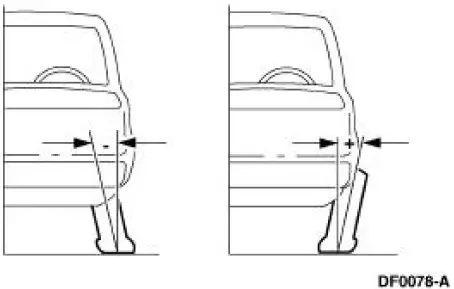
Camber is the vertical tilt of the wheel (1007) when viewed from the front. Camber can be positive or negative and has a direct effect on tire wear.
Caster
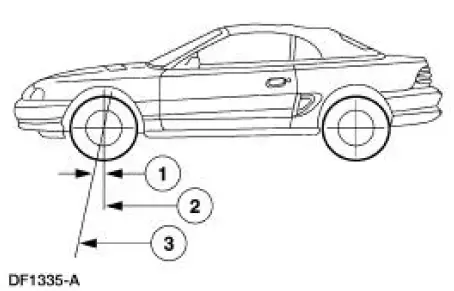
| Item | Part Number | Description |
| 1 | - | Positive caster |
| 2 | - | True vertical |
| 3 | - | Steering axis |
Caster is the deviation from vertical of an imaginary line drawn through the ball joints when viewed from the side. Caster specifications in this section will give the vehicle the best directional stability characteristics when loaded and driven. Caster setting is not related to tire wear.
Toe
Positive Toe (Toe In)
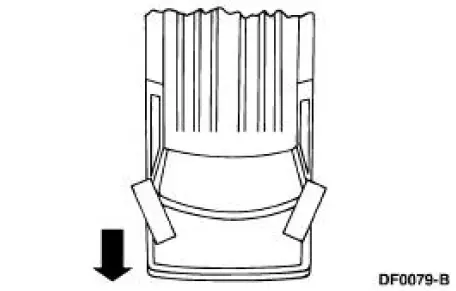
Negative Toe (Toe Out)
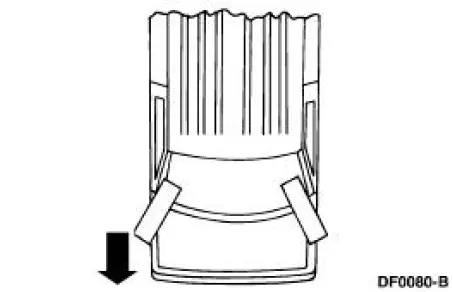
The vehicle toe setting affects tire wear and directional stability.
Ride Height
Front Ride Height Measurement
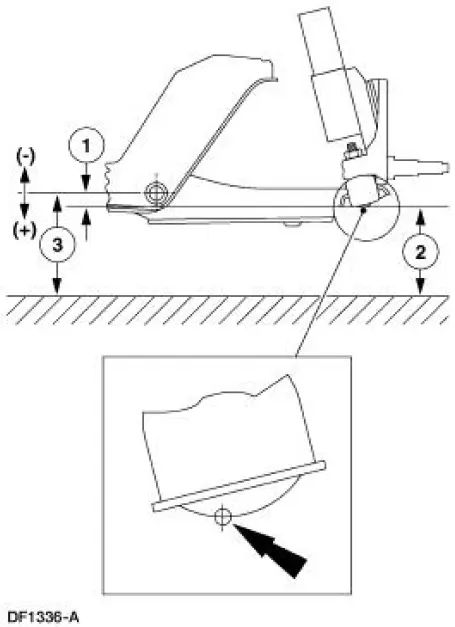
| Item | Description |
| 1 | Ride height = B - A |
| 2 | Measurement A |
| 3 | Measurement B |
 Wheel Alignment Angles
Wheel Alignment Angles
Camber and toe are adjustable on the front suspension systems. Front camber
is adjusted by moving
the top of the strut and spring assembly. Rear camber is adjusted by means of
eccentric cams on the
...
 Rear Ride Height Measurement - GT and Base
Rear Ride Height Measurement - GT and Base
Item
Description
1
Body reinforcement
2
Ride height (shortest distance)
3
Rear axle
Wheel Track
Item
Part Number
Description
1
-
Front track
...
Other materials:
Appendices
GENERAL INFORMATION
SYNC® End User License Agreement (EULA)
• You have acquired a device (“DEVICE”) that includes software
licensed by FORD MOTOR COMPANY from an affiliate of Microsoft
Corporation (“MS”). Those installed software products of MS orig ...
Child restraint and safety belt maintenance
Inspect the vehicle safety belts and child safety seat systems periodically
to
make sure they work properly and are not damaged. Inspect the vehicle
and child seat safety belts to make sure there are no nicks, tears or cuts.
Replace if necessary. All vehicle ...
Steering System (Diagnosis and Testing)
Special Tool(s)
Dial Thermometer 0-220F
023-R0007 or Equivalent
Hand Held Automotive Meter
105-R0053 or Equivalent
Power Steering Analyzer
211-F001 (014-00207) or
Equivalent
Spring Scale
211-034 (T74P-3504-Y)
...
